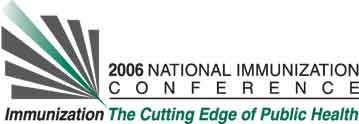Richard K. Zimmerman1, Mary Patricia Nowalk
1, Chyongchiou J. Lin
2, and Feng-Shou Ko
3. (1) Family Medicine & Clinical Epidemiology, University of Pittsburgh, 3518 Fifth Avenue, Pittsburgh, PA, USA, (2) Department of Radiation Oncology, University of Pittsburgh, 580 S Aiken Avenue, Suite 110, Pittsburgh, PA, USA, (3) Family Medicine and Clinical Epidemiology, University of Pittsburgh, 3518 5th Ave, Pittsburgh, PA, USA
Learning Objectives for this Presentation:
By the end of the presentation, participants will be able to understand the feasibility of influenza vaccination among children from low income families.
Background:
Due to high rates of hospitalization for influenza infections among very young children (<2 years), the Advisory Committee on Immunization Practices (ACIP) initiated new policy in 2002, which encouraged vaccination of healthy children ages 6-23 months against influenza.
Objectives:
To test the ability of tailored interventions to raise influenza immunization rates and assess the effect on timely receipt of other vaccines.
Methods:
We conducted a before/after trial over two years to increase influenza vaccination rates of patients 6 to 23 months old in five inner-city family health centers serving low-income children, with a sixth site as a concurrent control. Sites selected tailored interventions from strategies proven to increase vaccination rates.
Results:
Influenza vaccination rates improved significantly from a baseline of 4.7% to 24.7% in the first year and 36.6% in the second year, P<.001. The increase in rates was more in intervention sites than the control site (31.9% versus 25.7%, P =.02). In regression analyses for vaccination status that controlled for demographic factors, race was not a predictor of influenza vaccination but intervention year was associated with an Odds Ratio (OR) of 8.1 (95% confidence interval (CI) = 4.8-13.7) for the first intervention year and OR= 11.6 (95% CI = 7.1-18.8) for the second intervention year. Children vaccinated against influenza were more likely to have received DTaP 3 and MMR within two months of the recommended age than children not vaccinated against influenza (P<.001).
Conclusions:
These results show the feasibility of the recent recommendations to vaccinate children ages 6 to 23 months against influenza, at health centers serving low-income children. The addition of influenza vaccine was not associated with delayed receipt of other vaccines among these children.
See more of Posters
See more of The 40th National Immunization Conference (NIC)

